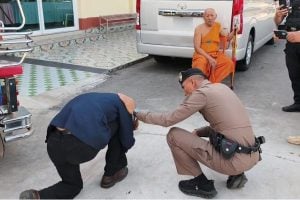China’s Taiwan military incursions test the limits of airspace

Over the past four days, more than 120 Chinese People’s Liberation Army (PLA) aircraft have passed by Taiwan in separate maneuvers, entering the self-governing island’s Air Defense Identification Zone (ADIZ).
On Saturday, coinciding with the People’s Republic of China’s (PRC) founding holiday, the PLA flew a 39 aircraft into the ADIZ, including bombers capable of carrying nuclear weapons. The flybys drew condemnation from the US and Taiwan.
On Monday, Taiwan’s Defense Ministry reported more than 50 PLA aircraft had entered the ADIZ, in the largest such maneuver to date.
The PLA aircraft passed off the island’s southwest coast at a distance of 200 to 300 kilometers (124 to 186 miles), much too close for Taipei’s comfort, as Taiwan fears that an invasion from the People’s Republic could happen at any time.
Soon after the first incursion on Saturday, it was widely reported in international media that the PRC had invaded the Republic of China’s (Taiwan’s) airspace.
However, there is a distinction that must be made when talking about airspace. On the one hand, there is national airspace, which is regulated by international law. Then there are the Air Defense Identification Zones, which have no basis in international law.
What is national airspace?
National airspace applies over the internationally recognized land and sea territory of a state. At the national border of two states, two blocks of national airspace therefore come into contact and rise above the national borders.
Over the sea, the airspace above territorial waters is also part of the national territory.
A state’s territorial waters are defined as extending from a baseline, usually the low water mark, out to 12 nautical miles. The airspace above the territorial waters counts as national airspace.
International law stipulates that a state has full sovereignty over its national airspace and can regulate its use independently.
In most cases, the entry of a civil aircraft into national airspace does not require permission. In contrast, military aircraft are not allowed to enter national airspace without the express permission of the state.
What is an Air Defense Identification Zone (ADIZ)?
An ADIZ is different from a national airspace. It is unilaterally declared by a state for reasons of military air defense. The states expect aircraft (civil and military) transiting an ADIZ to first to identify themselves and then to regularly transmit their coordinates.
Currently, a total of 20 countries have established ADIZs (including the US, Canada, Australia, Japan, South Korea, Taiwan, China, the United Kingdom, Norway, India and Pakistan). The first ADIZs, established in the 1950s, required information only if the aircraft subsequently wanted to enter national airspace. Also, the first ADIZs were drawn up so that they did not overlap or include disputed territories.
However, in East Asia, this is not the case. There, ADIZs overlap and include disputed territories.
Why Taiwan feels threatened
By flying military aircraft into Taiwan’s ADIZ over the weekend, the PRC did not violate Taiwan’s national airspace, Jerry Song, senior editor of the publication Defense International, told DW.
“The maneuvers in the past few days were more of a symbolic act to increase pressure on Taiwan,” he said.
“It would be really explosive if they [PLA aircraft] were to enter the airspace over the territory of Taiwan, then Taiwan would be forced to shoot them down,” he added.
Self-governing Taiwan is not recognized by Beijing, which regards the island as a “renegade” province that will one day be reunited with mainland China.
Intimidation attempts like this weekend’s maneuvers have been increasing for several to underline the territorial claims of the Chinese Communist Party, and put pressure on Taiwan’s government and military.
In recent years, this pressure on Taiwan has increased significantly, Ying Yu Lin, a professor of strategic studies at Sun Yat-sen National University in Taipei told DW.
“China will try to defeat Taiwan with minimal military deployment,” he said.
“To do so, Beijing is putting economic and diplomatic pressure on Taiwan. It will also try to stir up discontent among the Taiwanese people toward their government,” he added.
Tsung-Hsien Lee in Taipei contributed to this report
SOURCE: DW News
Latest Thailand News
Follow The Thaiger on Google News:


























